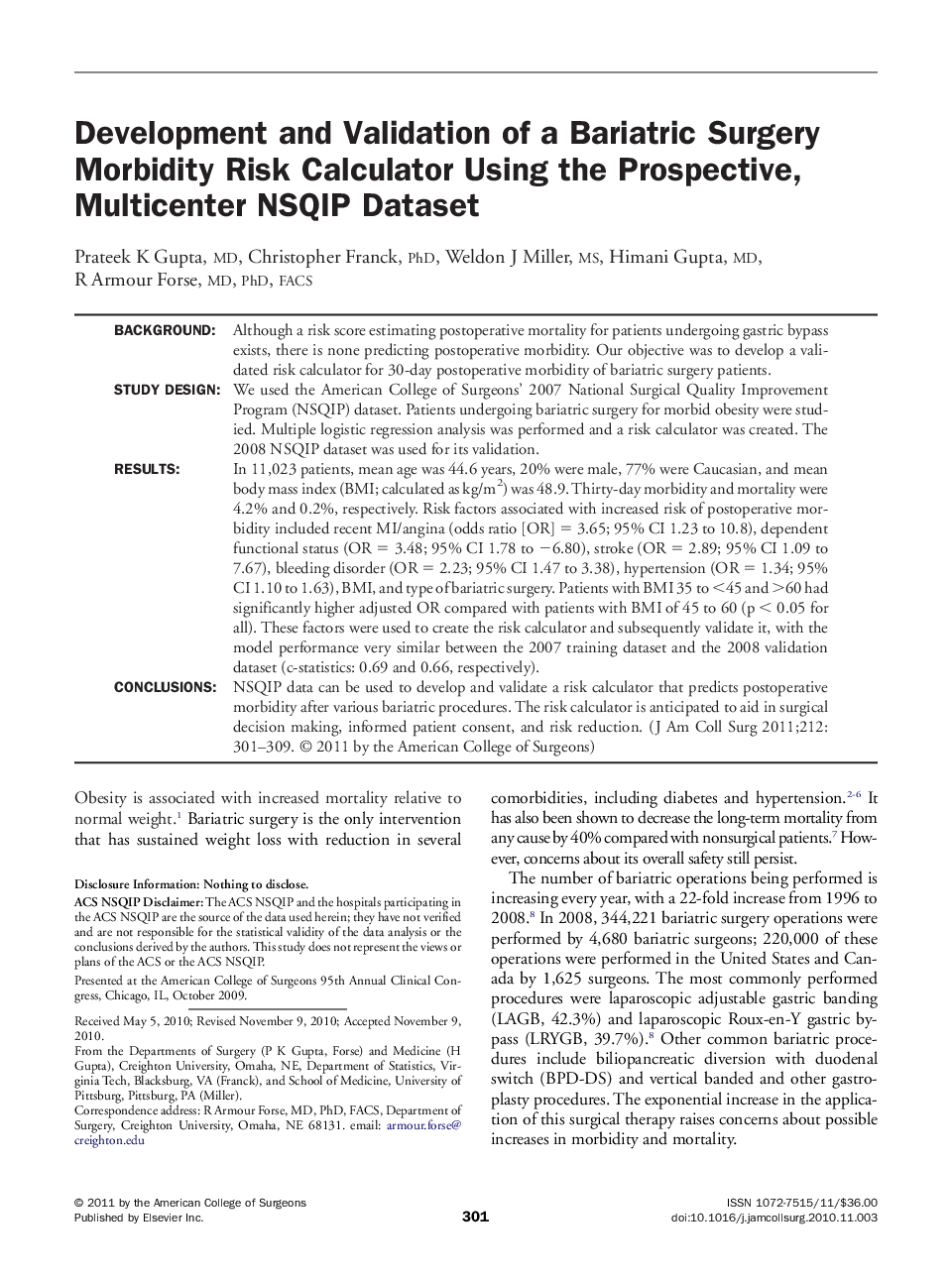| کد مقاله | کد نشریه | سال انتشار | مقاله انگلیسی | نسخه تمام متن |
|---|---|---|---|---|
| 4292328 | 1612275 | 2011 | 9 صفحه PDF | دانلود رایگان |

BackgroundAlthough a risk score estimating postoperative mortality for patients undergoing gastric bypass exists, there is none predicting postoperative morbidity. Our objective was to develop a validated risk calculator for 30-day postoperative morbidity of bariatric surgery patients.Study DesignWe used the American College of Surgeons' 2007 National Surgical Quality Improvement Program (NSQIP) dataset. Patients undergoing bariatric surgery for morbid obesity were studied. Multiple logistic regression analysis was performed and a risk calculator was created. The 2008 NSQIP dataset was used for its validation.ResultsIn 11,023 patients, mean age was 44.6 years, 20% were male, 77% were Caucasian, and mean body mass index (BMI; calculated as kg/m2) was 48.9. Thirty-day morbidity and mortality were 4.2% and 0.2%, respectively. Risk factors associated with increased risk of postoperative morbidity included recent MI/angina (odds ratio [OR] = 3.65; 95% CI 1.23 to 10.8), dependent functional status (OR = 3.48; 95% CI 1.78 to −6.80), stroke (OR = 2.89; 95% CI 1.09 to 7.67), bleeding disorder (OR = 2.23; 95% CI 1.47 to 3.38), hypertension (OR = 1.34; 95% CI 1.10 to 1.63), BMI, and type of bariatric surgery. Patients with BMI 35 to <45 and >60 had significantly higher adjusted OR compared with patients with BMI of 45 to 60 (p < 0.05 for all). These factors were used to create the risk calculator and subsequently validate it, with the model performance very similar between the 2007 training dataset and the 2008 validation dataset (c-statistics: 0.69 and 0.66, respectively).ConclusionsNSQIP data can be used to develop and validate a risk calculator that predicts postoperative morbidity after various bariatric procedures. The risk calculator is anticipated to aid in surgical decision making, informed patient consent, and risk reduction.
Journal: Journal of the American College of Surgeons - Volume 212, Issue 3, March 2011, Pages 301–309